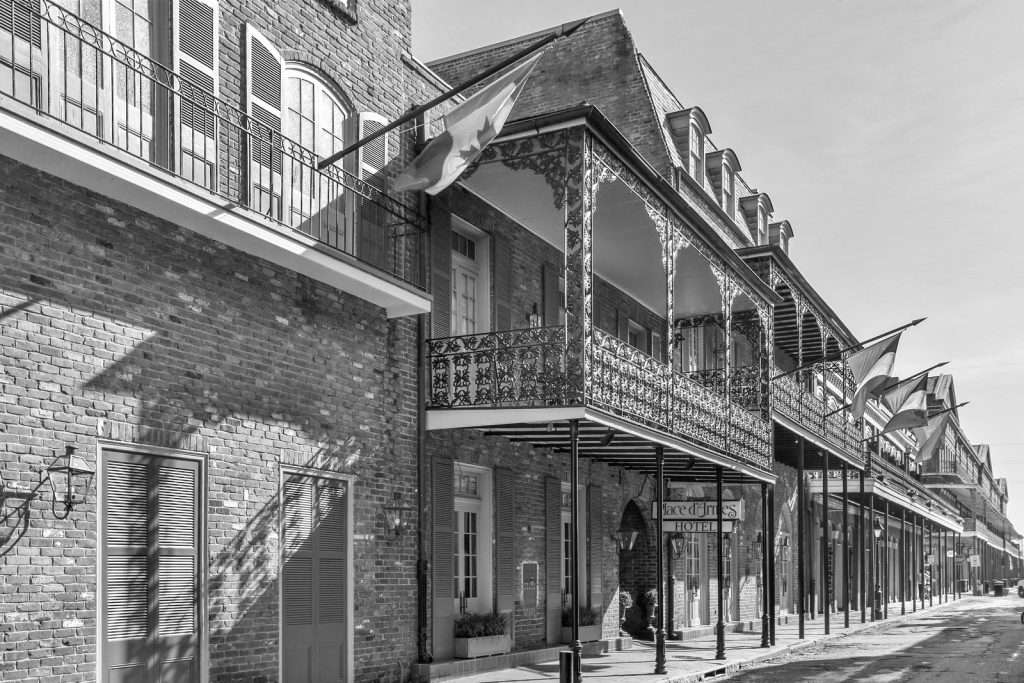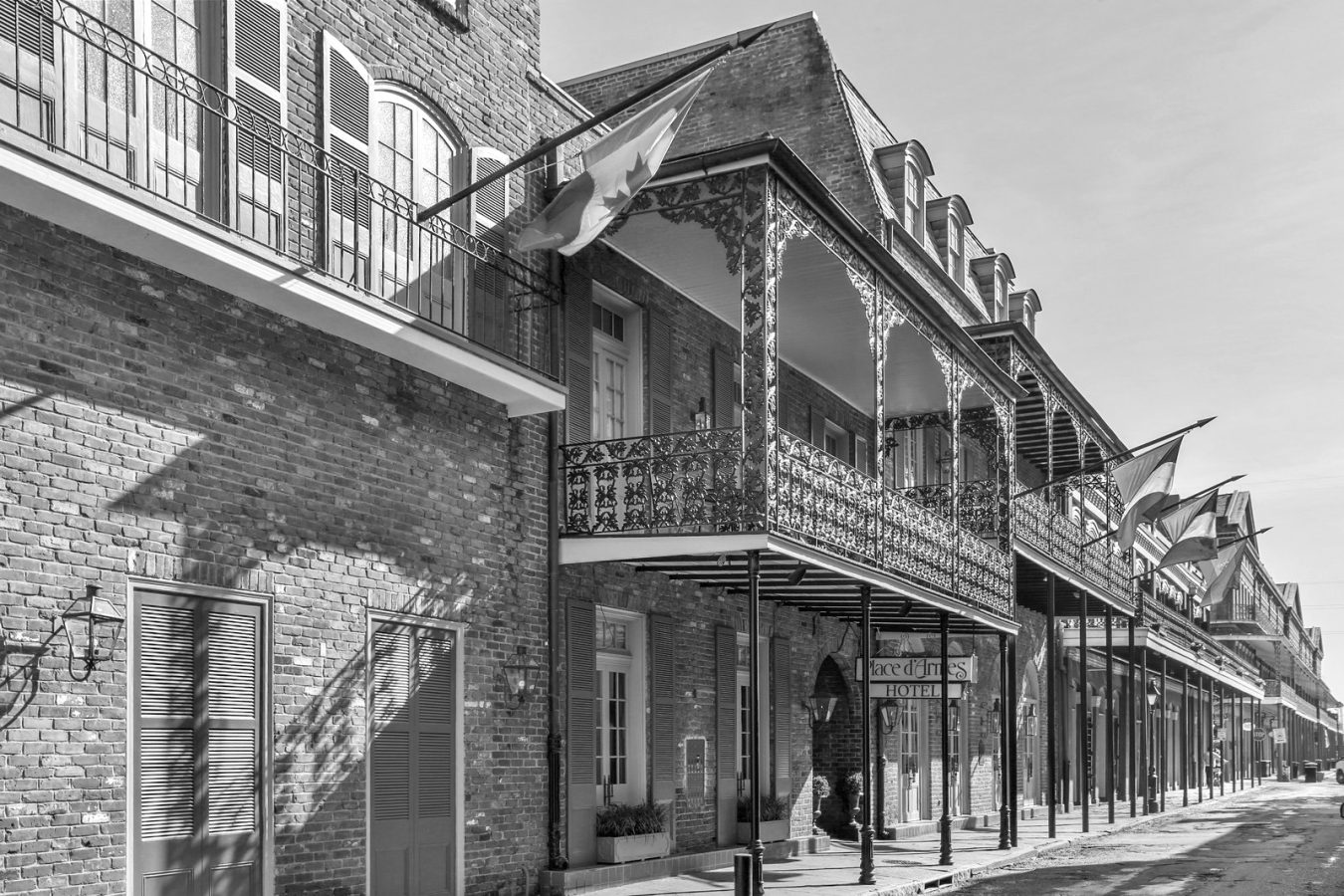
The Place d’Armes Hotel in the New Orleans French Quarter takes its name from the period when New Orleans was a French Crown Colony in 1722, during which the area now known as Jackson Square was called the Place d’Armes – military parade ground. This distinguished hotel holds a unique position as the only hotel at Jackson Square – the very Center of the Vieux Carre Historic District (French Quarter).
New Orleans itself was founded in 1718 by Sieur LeMoyne de Bienville, who chose a strategically elevated spot near the sharp crescent bend of the Mississippi River—the only dry land for miles. French military architect Leblond de la Tour and his assistant Adrian de Pauger designed the layout for the new French Crown Colony, and at its center was the Place d’Armes, a parade ground designated for military drills and ceremonies.
As the years passed, most of the land surrounding the square was granted to employees and investors of the Compagnie des Indes, a trading company sanctioned by the King of France, and led by Scotsman John Law. Numerous early residents built their homes on these land grants, and records trace the ownership history. The Place d’Armes Hotel, however, is comprised of several parcels of land on Chartres Street and St. Ann Street, and none of the buildings that now compose the hotel pre-date 1794, as two major fires swept through the city in 1788 and 1794, destroying most structures.
Seven historic buildings form the Place d’Armes Hotel – five are believed to have been constructed between 1820 and 1880 two of the buildings were added in the 1960s. The row of three 3-story brick buildings at 809, 811, and 815 Chartres Street was built in the 1840s to 1850s and was purchased by Louis Bonnemar in 1844. These structures exemplify the simple Greek Revival architecture, characterized by post and lintel construction, and were initially owned by notable figures such as Jean Baptiste D’Estrehan, the French Colonial Treasurer of the Navy, and later by Francois Broutin, son of the renowned French Colonial architect Ignace Francois Broutin.
The building at 817 Chartres Street, now a 3-story brick structure, is believed to have been erected in 1835 for Dr. Felix Formento. Over time, cast iron galleries were added to the second and third floors, enhancing the building’s appearance. The site was also once home to the Union Hotel and Coffee House from July 1832 to March 1833, offering a range of amenities from ice cream and coffee to cockfighting on the premises.
The property at 617-619 St. Ann Street houses the modern 5-story hotel, constructed in 1964. This development involved the demolition of a warehouse dating back to around 1910, which was possibly used for wine storage. However, the site’s early history is quite significant. It was granted to Sieur Richaume in 1722 but later passed through various owners, including the Capuchin School founded by Father Raphael in 1725. The property changed hands multiple times before being developed into the hotel we know today.
The core property (lobby location) at 623-625 St. Ann was owned by Angelo Glorioso, a Sicilian immigrant (1903) who used the space as a residence and grocery warehouse. Mr. Glorioso died in 1951 and willed the property to his only daughter, Mary Ann Glorioso Valentino, the Matriarch of the Valentino family who owns and operates the hotel today. The Place d’Armes Hotel is a masterful restoration of seven, very historic, contiguous, structures that all surround a lush center courtyard (one of the most beautiful in all the French Quarter) in arguably the most coveted visitor location in all New Orleans – Jackson Square at the Mississippi River!
The hotel has welcomed visitors for over 60 years (since 1963) and boasts of its legions of guests who regularly call the Place d’Armes their home in New Orleans whenever they visit. The Place d’Armes Hotel stands as a testament to the city’s resilience and timeless allure, offering guests an opportunity to immerse themselves in the lively spirit of the French Quarter while being connected to its storied past.

